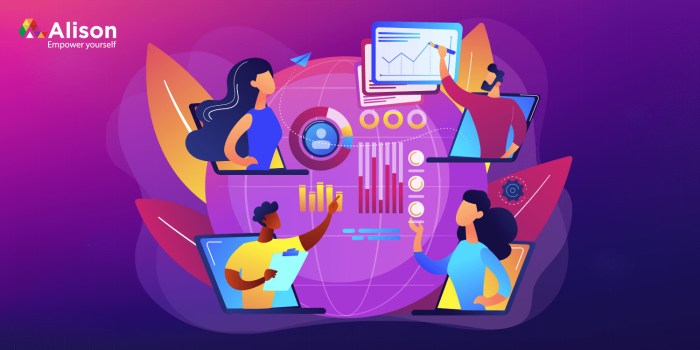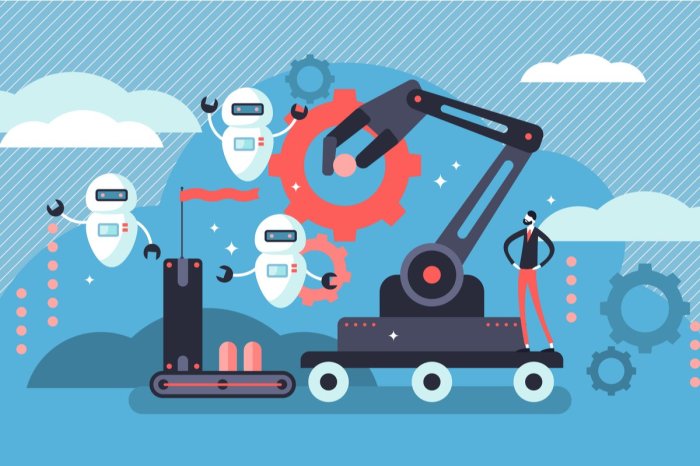In today’s technology-driven world, the lack of specific technology knowledge and skills has become a significant impediment to workplace productivity, innovation, and career growth. This article delves into the negative consequences of this knowledge gap, identifies methods for assessing and addressing it, and explores strategies for acquiring and leveraging technology knowledge and skills.
The absence of adequate technology proficiency can lead to diminished productivity, as individuals struggle to complete tasks efficiently and effectively. Moreover, it can stifle innovation by limiting the ability to explore new technologies and implement creative solutions. Furthermore, a lack of technology knowledge and skills can hinder career advancement and earning potential, as employers increasingly seek candidates with specialized expertise.
Impacts of Lacking Specific Technology Knowledge and Skills

In today’s rapidly evolving technological landscape, possessing specific technology knowledge and skills has become paramount for individuals to thrive in the workplace. However, the absence of such knowledge and skills can lead to a plethora of negative consequences.
One significant impact is hindered productivity. Individuals lacking specific technology knowledge and skills may struggle to operate essential software, utilize digital tools effectively, and automate tasks, leading to delays and inefficiencies in completing work.
Moreover, innovation can be stifled. Without a solid foundation in technology, employees may lack the ability to identify new technological solutions, implement cutting-edge tools, and contribute to the development of innovative products and services.
Furthermore, career advancement and earning potential can be compromised. In competitive job markets, employers prioritize candidates with specific technology knowledge and skills, as they are more likely to add value to the organization. Lacking these skills can limit career opportunities and result in lower salaries.
Identifying Knowledge and Skills Gaps
Recognizing the knowledge and skills gaps is the first step towards addressing them. Several methods can be employed to assess these gaps:
- Self-Assessment:Individuals can evaluate their own knowledge and skills by reflecting on their current abilities, identifying areas where they feel confident, and recognizing areas where they need improvement.
- External Evaluations:Performance reviews, feedback from supervisors or colleagues, and standardized assessments can provide an external perspective on an individual’s technology knowledge and skills.
Once gaps have been identified, it is crucial to prioritize them based on their impact on job performance and career goals. Addressing high-priority gaps should be a top priority.
Strategies for Acquiring Technology Knowledge and Skills: The Lack Of Specific Technology Knowledge And Skills

There are numerous strategies for acquiring technology knowledge and skills, including:
- Formal Education:Degree programs, diplomas, and certifications provide a structured and comprehensive approach to learning new technologies.
- Online Courses:Online platforms offer a wide range of courses that can be tailored to specific technology needs.
- Workshops:Intensive, hands-on workshops can provide practical experience with specific technologies.
- On-the-Job Training:Working with experienced colleagues or mentors can provide valuable on-the-job learning opportunities.
The most appropriate strategy depends on individual needs and learning preferences. It is important to consider factors such as time constraints, financial resources, and desired outcomes.
Building a Culture of Continuous Learning

Fostering a culture of continuous learning is essential for organizations to keep pace with technological advancements. This can be achieved by:
- Encouraging Employee Development:Organizations should invest in employee development programs, providing opportunities for employees to acquire new knowledge and skills.
- Promoting Knowledge Sharing:Creating a collaborative environment where employees share their knowledge and expertise with others can facilitate continuous learning.
- Utilizing Technology:Online learning platforms and other technological tools can be leveraged to support continuous learning.
By embracing continuous learning, organizations can ensure that their employees remain up-to-date with the latest technologies and contribute effectively to the organization’s success.
Quick FAQs
What are the common methods for assessing technology knowledge and skills gaps?
Self-assessment, external evaluations, and performance reviews are commonly used to identify technology knowledge and skills gaps.
How can I prioritize and address identified knowledge and skills gaps?
Prioritize gaps based on their impact on job performance and career goals. Address them through formal education, online courses, workshops, or on-the-job training.
What are the benefits of investing in employee development and training programs?
Investing in employee development and training programs enhances employee skills, increases job satisfaction, and improves organizational performance.